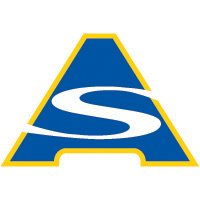What do they do?
Operate or tend machinery at surface mining site, equipped with scoops, shovels, or buckets to excavate and load loose materials.
Also known as:
Backhoe Operator, Dragline Oiler, Dragline Operator, Earth Moving Equipment Operator, End Loader Operator, Equipment Operator, Excavator Operator, Heavy Equipment Operator, Loader Operator, Pit Operator, Track Hoe Operator, Yard Loader Operator
-
3.6%
Change
Ranks #34 in job growth rate70Job Openings
Ranks #30 in net job growth
Colleges with the most graduates that become Excavating and Loading Machine and Dragline Operators, Surface Mining
-
State Technical College of Missouri
Linn, MO
-
Pittsburgh Institute of Aeronautics
West Mifflin, PA
-
SUNY College of Technology at Alfred
Alfred, NY
-
Pennsylvania College of Technology
Williamsport, PA
-
Putnam Career and Technical Center
Eleanor, WV
Looking for colleges that offer a specific major? Use the College Match Tool to find your best-matched schools and discover your estimated Net Price!
- Doctorate or Professional Degree (<1%)
- Master's degree (<1%)
- Bachelor's degree (5%)
- Associate's degree (5%)
- Some college, no degree (20%)
- High school diploma equivalent (52%)
- Less than high school diploma (18%)
People in this career often have talent in:
- Control Precision - The ability to quickly and repeatedly adjust the controls of a machine or a vehicle to exact positions.
- Multilimb Coordination - The ability to coordinate two or more limbs (for example, two arms, two legs, or one leg and one arm) while sitting, standing, or lying down. It does not involve performing the activities while the whole body is in motion.
- Depth Perception - The ability to judge which of several objects is closer or farther away from you, or to judge the distance between you and an object.
- Manual Dexterity - The ability to quickly move your hand, your hand together with your arm, or your two hands to grasp, manipulate, or assemble objects.
- Reaction Time - The ability to quickly respond (with the hand, finger, or foot) to a signal (sound, light, picture) when it appears.
- Arm-Hand Steadiness - The ability to keep your hand and arm steady while moving your arm or while holding your arm and hand in one position.
- Response Orientation - The ability to choose quickly between two or more movements in response to two or more different signals (lights, sounds, pictures). It includes the speed with which the correct response is started with the hand, foot, or other body part.
- Rate Control - The ability to time your movements or the movement of a piece of equipment in anticipation of changes in the speed and/or direction of a moving object or scene.
- Far Vision - The ability to see details at a distance.
- Spatial Orientation - The ability to know your location in relation to the environment or to know where other objects are in relation to you.
- Near Vision - The ability to see details at close range (within a few feet of the observer).
- Finger Dexterity - The ability to make precisely coordinated movements of the fingers of one or both hands to grasp, manipulate, or assemble very small objects.
- Auditory Attention - The ability to focus on a single source of sound in the presence of other distracting sounds.
- Peripheral Vision - The ability to see objects or movement of objects to one's side when the eyes are looking ahead.
People in this career often do these activities:
- Operate excavation equipment.
- Inspect material-moving equipment to detect problems.
- Maintain professional knowledge or certifications.
- Signal others to coordinate vehicle movement.
- Receive information or instructions for performing work assignments.
- Direct material handling or moving activities.
- Move materials, equipment, or supplies.
- Measure product or material dimensions.
- Verify information or specifications.
- Assemble temporary equipment or structures.
- Maintain work equipment or machinery.
- Maintain material moving equipment in good working condition.
- Clean facilities or work areas.
- Shovel materials.
This page includes data from:

 Occupation statistics: USDOL U.S. Bureau of Labor Statistics Occupational Employment Statistics
Occupation statistics: USDOL U.S. Bureau of Labor Statistics Occupational Employment Statistics







